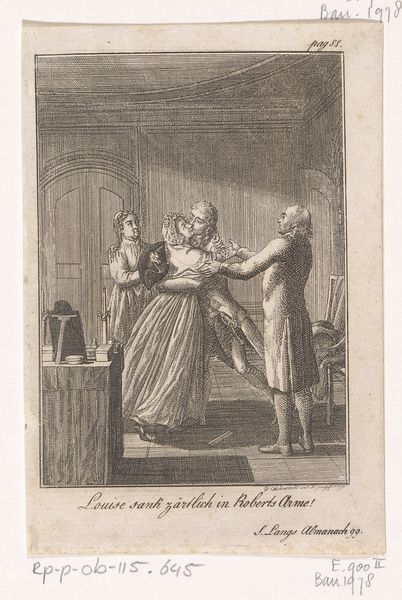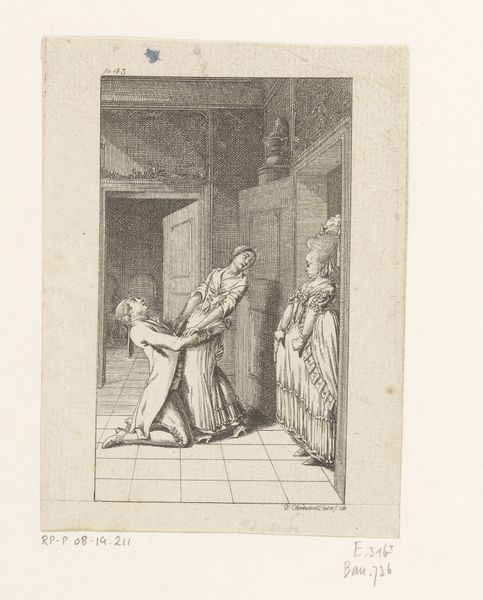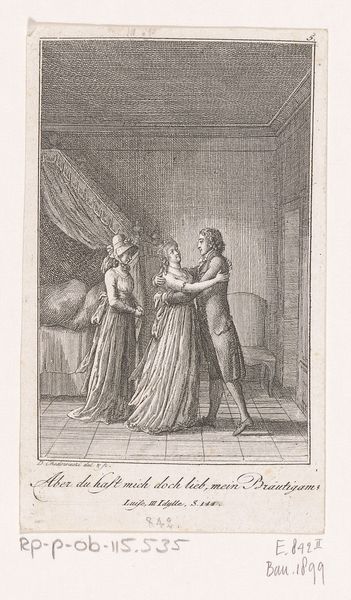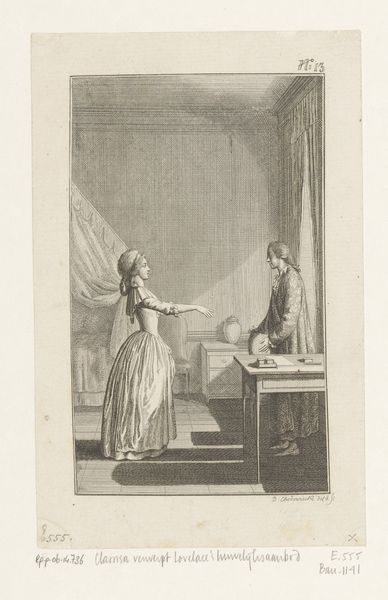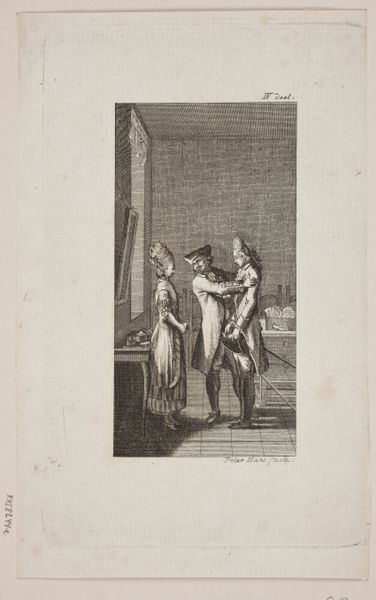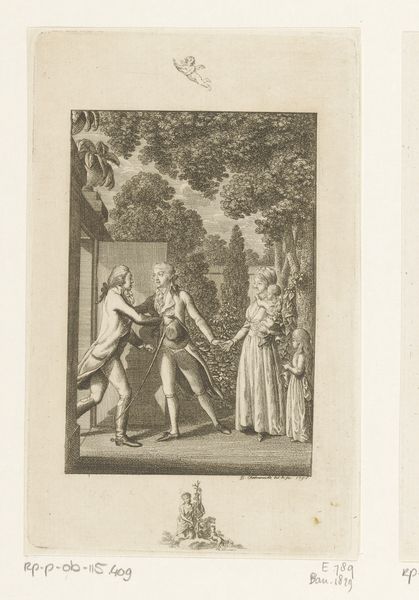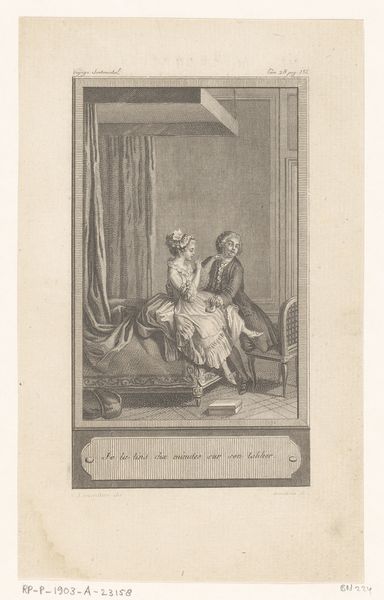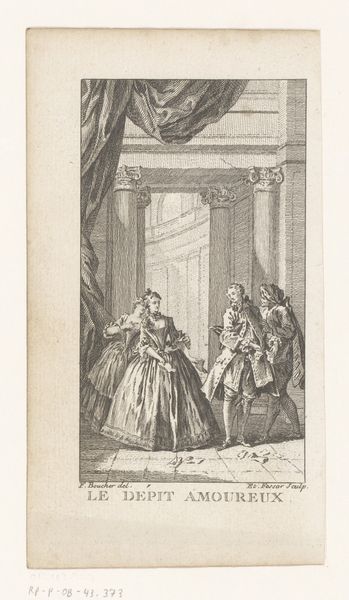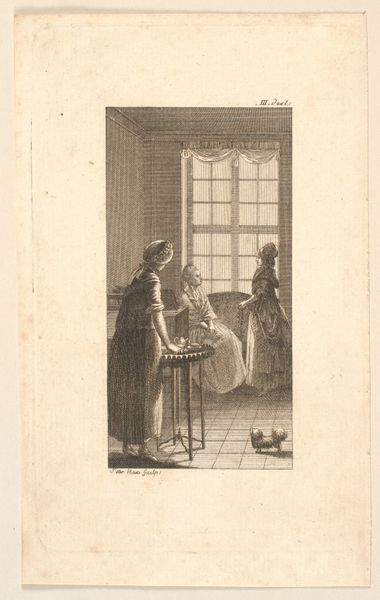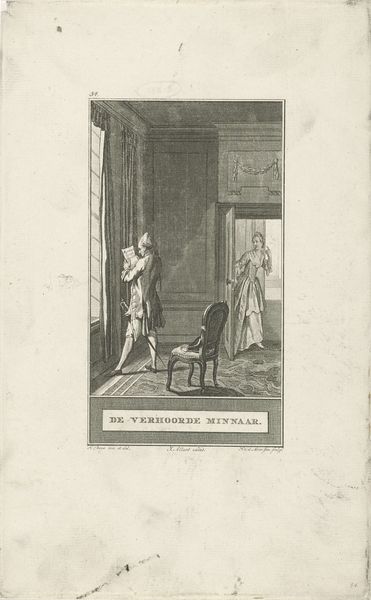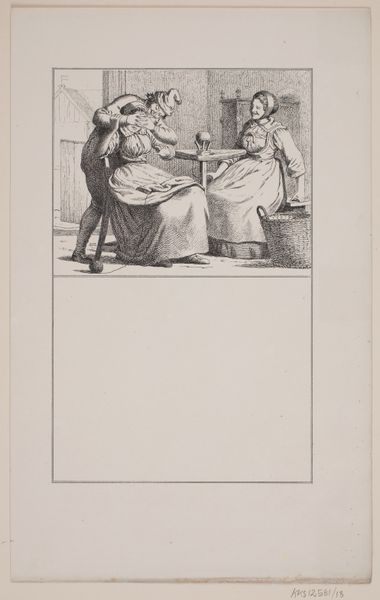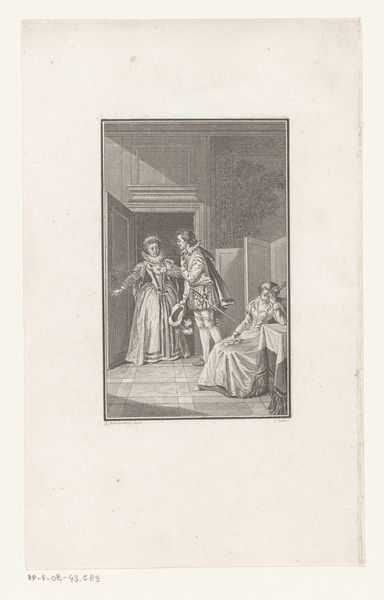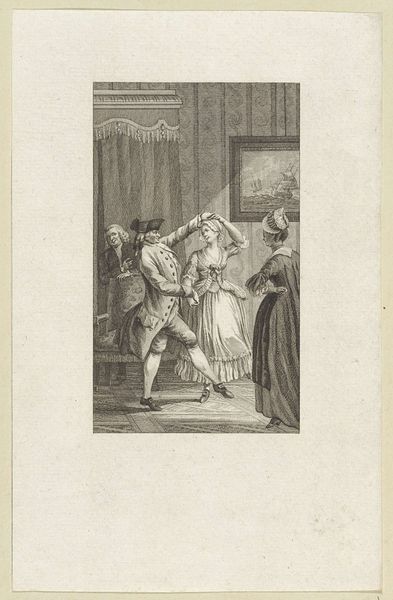
print, paper, engraving
#
baroque
# print
#
figuration
#
paper
#
line
#
history-painting
#
engraving
Dimensions: height 353 mm, width 224 mm
Copyright: Rijks Museum: Open Domain
Curator: Here we have "Annunciatie," an engraving attributed to Louis Surugue, dating roughly from 1691 to 1733. It depicts the Annunciation. Editor: It strikes me immediately as an intimate moment despite the formality of the figures. Mary looks startled, almost vulnerable. Curator: It’s interesting how Surugue, working within the visual language of the Baroque period, frames this pivotal religious event. Engravings like this played a crucial role in disseminating religious narratives to a broader audience, acting as visual aids for faith and morality. Editor: Exactly. Consider the power dynamic embedded in this scene—a divine messenger interrupting Mary’s domestic sphere with life-altering news. What agency did women have in such narratives, or within the patriarchal religious institutions that propagated them? Curator: Baroque art often served to reinforce existing social hierarchies, with the church as a major patron. Examining this print, we can analyze how such images helped shape societal attitudes. The controlled lines of the engraving lend it a certain authority. Editor: But there's also something radical about it. A young, unwed woman is chosen to carry immense religious and political weight. We can choose to read her vulnerability not as a sign of weakness, but as an acknowledgment of the immense responsibility placed upon her. How has the depiction of the Virgin Mary evolved over time and across different social contexts? Curator: Her figure became, essentially, an official propaganda for various socio-political entities over centuries! You can look at its development for hundreds of years across different social, cultural, and religious settings. This piece acts as an artefact within this lineage. Editor: Indeed. Exploring that artistic history helps us unpack how narratives surrounding identity, faith, and power were carefully crafted and disseminated to various peoples over time. It remains important to unpack the intersectional nuances of artworks like this, understanding the complicated contexts that influence how it may be received across modern, multicultural settings. Curator: Absolutely. It is an invaluable tool in our continuous exploration of religious authority within artistic, commercial and sociopolitical channels across history. Editor: Precisely!
Comments
No comments
Be the first to comment and join the conversation on the ultimate creative platform.
